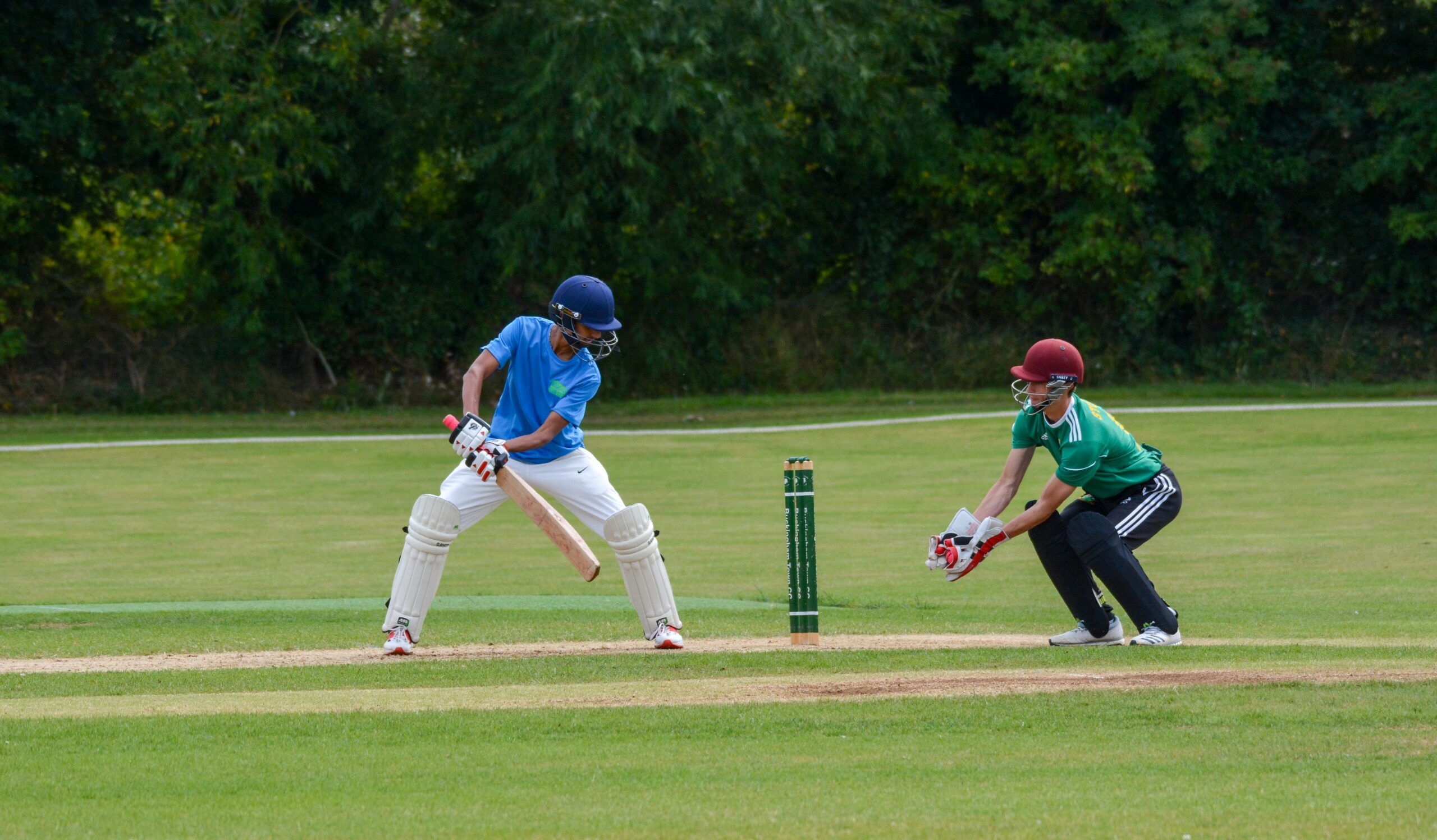Introduction
The 2nd T20I match between India and Sri Lanka proved to be a thrilling encounter, showcasing the competitive spirit of both teams. Held at the picturesque venue, the match carried significant weight as it presented India with the opportunity to clinch the series. Enthusiastic fans and cricket aficionados eagerly anticipated a high-stakes contest, and the players did not disappoint.
India, having secured a lead in the series, aimed to seal their victory with a commanding performance. Sri Lanka, on the other hand, sought to level the series and force a decider in the third match. Amidst this backdrop, it was Ravi Bishnoi’s exceptional performance that emerged as the defining highlight of the game. The young leg-spinner’s skills were on full display, making a substantial impact and guiding India to a memorable win. Bishnoi’s prowess with the ball not only stifled the Sri Lankan batsmen but also showcased the depth of talent within the Indian squad.
As the match unfolded, it became clear that this encounter would be remembered for its strategic plays, individual brilliance, and the intense rivalry between the two cricketing nations. The spectators witnessed a blend of tactical acumen and raw talent, culminating in a series-clinching victory for India. This match not only reinforced India’s dominance in the T20 format but also highlighted the emerging stars who continue to elevate the team’s performance on the global stage.
In summary, the 2nd T20I between India and Sri Lanka was a testament to the excitement and unpredictability that T20 cricket brings. Ravi Bishnoi’s standout performance was instrumental in India’s triumph, making the game a significant chapter in the ongoing rivalry between these two teams. The match will be remembered for its competitive spirit and the remarkable talent on display, setting the stage for further thrilling encounters in the future.
The toss for the second T20I between India and Sri Lanka took place under clear skies at the R. Premadasa Stadium. India won the toss and elected to bat first, a decision reflecting their confidence in setting a strong total on the scoreboard. The Indian captain emphasized the importance of putting runs on the board early and leveraging their bowling strength later in the game.
Both teams made notable changes to their playing XI from the first T20I. India brought in Rahul Chahar, who replaced Varun Chakravarthy, aiming to bolster their spin attack. They also included Navdeep Saini in place of Bhuvneshwar Kumar, looking for extra pace in the bowling department. The Indian playing XI was as follows:
India Playing XI:
Shikhar Dhawan (c), Prithvi Shaw, Sanju Samson (wk), Suryakumar Yadav, Manish Pandey, Hardik Pandya, Deepak Hooda, Rahul Chahar, Navdeep Saini, Yuzvendra Chahal, Deepak Chahar.
On the other hand, Sri Lanka made a strategic change by including Akila Dananjaya in place of Lakshan Sandakan to strengthen their spin options, which they deemed crucial against the Indian batting lineup. The Sri Lankan captain highlighted the need to adapt to the conditions and apply pressure through their spinners. The Sri Lankan playing XI was as follows:
Sri Lanka Playing XI:
Dasun Shanaka (c), Avishka Fernando, Dhananjaya de Silva, Charith Asalanka, Wanindu Hasaranga, Chamika Karunaratne, Akila Dananjaya, Dushmantha Chameera, Isuru Udana, Minod Bhanuka (wk), Pathum Nissanka.
The changes made by both teams indicated a tactical approach, aiming to exploit the pitch conditions and counter the opposition’s strengths. India’s decision to bat first showcased their intent to set a formidable target, while Sri Lanka’s adjustments in their bowling unit reflected their strategy to restrict the Indian batting lineup. These strategic moves set the stage for an intriguing contest, with both teams looking to capitalize on their respective strengths.
India’s Batting Performance
India’s batting innings in the 2nd T20I against Sri Lanka showcased a blend of resilience and aggression, propelling them to a competitive total. The foundation was laid by the top-order batsmen, with a noteworthy performance from the opening pair. The opening partnership set the tone with a steady start, ensuring India did not lose early wickets.
Key contributions came from Shikhar Dhawan and KL Rahul, who exhibited remarkable synergy. Dhawan’s innings, characterized by elegant stroke play, saw him accumulate a well-crafted 45 runs, which included five boundaries and one six. KL Rahul, on the other end, played the role of the aggressor, scoring a quick-fire 35 off 25 balls with four boundaries and two sixes. Their partnership of 78 runs for the first wicket was crucial in providing a solid platform.
Following the dismissal of the openers, the middle order capitalized on the foundation. Suryakumar Yadav continued his fine form, contributing a brisk 40 off 30 balls. His innings was punctuated with innovative shots and three towering sixes. Rishabh Pant and Hardik Pandya then took charge in the latter part of the innings. Pant’s aggressive 25 off 15 balls, laced with two boundaries and a six, kept the momentum going.
Hardik Pandya’s late surge added valuable runs to the total. His unbeaten 31 off 18 balls, including three boundaries and a six, ensured India reached a formidable total of 180 runs for the loss of five wickets. The innings included a total of 15 boundaries and seven sixes, underscoring the aggressive intent of the Indian batsmen.
In summary, India’s batting performance was a collective effort, with significant contributions from both the top-order and middle-order batsmen. The partnerships were well-constructed, and the acceleration in the latter half of the innings was pivotal in setting a challenging target for Sri Lanka. The total of 180 runs proved to be a competitive score, laying the foundation for India’s eventual victory in the match.
Sri Lanka’s Bowling Efforts
Sri Lanka’s bowling unit exhibited a blend of resilience and skill in their attempt to contain India’s formidable batting lineup during the second T20I. Despite the challenges, several bowlers managed to create pivotal moments that kept the contest engaging.
One of the standout performers for Sri Lanka was Wanindu Hasaranga. His leg-spin bowling proved to be a significant obstacle for the Indian batsmen. Hasaranga managed to claim two crucial wickets, including that of the in-form Suryakumar Yadav. His economical spell, conceding just 26 runs in his four overs, was a key factor in keeping the run rate in check.
Dushmantha Chameera also made a notable impact with the new ball. His pace and accuracy troubled the Indian openers, and he succeeded in dismissing the dangerous KL Rahul early in the innings. Chameera’s figures of 3 for 34 underscored his ability to strike at crucial junctures, adding pressure on the Indian middle order.
Another bowler who had a significant influence was Maheesh Theekshana. The young off-spinner showcased excellent control and variation, making it difficult for the batsmen to score freely. Theekshana’s spell included a wicket and an economy rate of just 6.5, further highlighting his potential as a key player for Sri Lanka.
Despite these individual efforts, the collective performance of Sri Lanka’s bowling attack faced challenges in maintaining consistency. The Indian batsmen capitalized on any loose deliveries, particularly in the latter stages of the innings. Nonetheless, the perseverance and skill displayed by the Sri Lankan bowlers ensured that India had to work hard for their runs, setting up a competitive total.
Overall, while Sri Lanka’s bowlers showcased moments of brilliance and achieved notable milestones, the lack of sustained pressure allowed India to build crucial partnerships that ultimately tilted the match in their favor.
Sri Lanka’s Batting Chase
Sri Lanka’s innings began with a cautious yet hopeful approach as they chased down India’s formidable target. The openers, Pathum Nissanka and Kusal Mendis, aimed to lay a solid foundation. Despite a steady start, the Indian bowlers, led by Ravi Bishnoi, maintained relentless pressure. Nissanka, displaying resilience, managed to score a quick 36 off 28 balls, providing some momentum early in the chase.
The first significant partnership emerged between Nissanka and Charith Asalanka, who stitched together a 50-run stand. Asalanka’s composed innings of 42 runs off 35 balls was pivotal in keeping Sri Lanka in contention. However, Ravi Bishnoi’s entry into the attack proved to be the turning point. Bishnoi’s exceptional leg-spin bowling dismantled the middle order, claiming crucial wickets at regular intervals.
Bishnoi’s spell of 4 for 22 was a masterclass in precision and variation, making it increasingly difficult for the Sri Lankan batsmen to accelerate. His dismissal of Asalanka, followed by the quick removal of Dhananjaya de Silva and Dasun Shanaka, left Sri Lanka reeling. The required run rate, which had been steadily climbing, added further pressure, forcing the Sri Lankan batsmen to take risks.
Despite the lower order’s efforts, including a valiant 27 from Chamika Karunaratne, the boundaries dried up, and the escalating run rate proved insurmountable. The disciplined Indian bowling attack, supported by sharp fielding, restricted Sri Lanka to 157 for 9, falling short by 21 runs.
The inability to form substantial partnerships and the lack of a big innings from any of the top-order batsmen ultimately hindered Sri Lanka’s chase. Bishnoi’s brilliance, coupled with strategic bowling changes and effective field placements, sealed India’s series-clinching victory, underscoring the importance of maintaining pressure and seizing crucial moments in T20 cricket.
Ravi Bishnoi’s Star Performance
Ravi Bishnoi was the standout performer in India’s series-clinching win against Sri Lanka in the 2nd T20I. The young leg-spinner demonstrated exceptional skill and composure, delivering a match-winning performance that earned him accolades from teammates and cricket enthusiasts alike. Bishnoi’s bowling figures were impressive, as he took 3 crucial wickets while maintaining an economy rate of just 6.5 runs per over.
Bishnoi’s first significant breakthrough came in the 8th over when he dismissed the dangerous Kusal Perera, who was looking set to anchor Sri Lanka’s innings. Bishnoi’s well-disguised googly completely deceived Perera, leading to a clean bowled dismissal. This wicket turned the momentum in India’s favor and set the tone for the rest of the match.
In his following spell, Bishnoi struck again, removing Pathum Nissanka with a beautifully flighted delivery that induced a false shot, resulting in a catch at mid-off. This wicket further dented Sri Lanka’s batting lineup and showcased Bishnoi’s ability to outthink and outfox the batsmen.
The final nail in the coffin was Bishnoi’s dismissal of Dasun Shanaka, Sri Lanka’s captain, who was attempting to stabilize the innings. A sharp, turning leg-break caught Shanaka off guard, leading to a straightforward stumping by the wicketkeeper. This wicket effectively sealed the match in India’s favor, as Sri Lanka struggled to recover from the consistent fall of wickets.
Post-match, Indian captain praised Bishnoi’s performance, stating, “Ravi has been a revelation for us. His ability to bowl under pressure and take key wickets is invaluable. He has a bright future ahead.” Bishnoi, in his interview, expressed gratitude for the support and guidance from senior players and the coaching staff, which he credited for his stellar performance.
Ravi Bishnoi’s contribution was pivotal in ensuring India’s victory and clinching the series against Sri Lanka. His exceptional bowling display not only showcased his talent but also underscored his potential to be a key player for India in future T20I matches.
Beyond Ravi Bishnoi’s stellar performance, the 2nd T20I between India and Sri Lanka saw several noteworthy contributions from both sides. On the Indian front, batsman Shreyas Iyer delivered a commendable knock, scoring 50 runs off 32 balls. His innings, marked by strategic shot selection and brisk running between the wickets, provided India with the much-needed momentum during the middle overs.
Another significant contribution came from the seasoned all-rounder, Hardik Pandya, who played a dual role with both the bat and ball. Pandya’s quickfire 25 runs off 15 balls added crucial runs to India’s total, while his disciplined bowling, yielding two wickets for just 22 runs in his four overs, curtailed the Sri Lankan chase effectively.
On the Sri Lankan side, Charith Asalanka stood out with his resilient batting. Despite the challenging situation, Asalanka managed to score 60 runs off 40 balls, showcasing his potential as a future star for Sri Lankan cricket. His innings was characterized by a series of well-timed boundaries and a composed approach in the face of mounting pressure.
Emerging talent Maheesh Theekshana also made a notable impact with the ball. The young spinner bowled an economical spell, conceding just 24 runs in his four overs and taking the crucial wicket of Ishan Kishan. Theekshana’s performance underscored his growing reputation as a promising bowler in the T20 format.
In the fielding department, Indian wicketkeeper Rishabh Pant’s sharp reflexes accounted for two pivotal dismissals, including a lightning-fast stumping that removed the dangerous Bhanuka Rajapaksa. His agility behind the stumps was instrumental in maintaining pressure on the Sri Lankan batsmen.
These performances, while not the headline acts, played a crucial role in shaping the outcome of the match. They reflect the depth of talent present in both teams and highlight the importance of collective effort in achieving success in the shortest format of the game.
Conclusion and Series Overview
The second T20I match between India and Sri Lanka culminated in a thrilling victory for India, securing their dominance in the series. Ravi Bishnoi emerged as the standout performer, his exceptional bowling playing a pivotal role in clinching the series for India. Bishnoi’s remarkable figures underscored the depth and talent within the Indian squad, contributing significantly to the team’s comprehensive performance throughout the series.
India’s batting lineup showcased resilience and adaptability, with key contributions from both seasoned players and emerging talents. Sri Lanka, despite their spirited efforts, found themselves outmaneuvered by a more cohesive and strategically superior Indian team. The Sri Lankan players displayed flashes of brilliance, particularly in their bowling attack, but inconsistencies in their batting lineup hampered their ability to build substantial partnerships.
Reflecting on the series, it is evident that India’s blend of experienced campaigners and young prodigies provided a balanced and dynamic approach. The team’s tactical acumen and adaptability were crucial in overcoming the challenges posed by Sri Lanka. Conversely, Sri Lanka’s journey, although marked by moments of promise, highlighted areas requiring further refinement and consistency.
Looking ahead, both teams have a busy schedule with upcoming fixtures and tournaments. India’s focus will likely shift towards maintaining their momentum and addressing any areas of concern as they gear up for future engagements. For Sri Lanka, the lessons gleaned from this series will be invaluable in their preparations for forthcoming matches, as they strive to enhance their performance and competitiveness on the international stage.
Fans can anticipate more exciting cricketing action as both teams continue to evolve and compete. The journey ahead promises intense battles and opportunities for players to shine, ensuring that the spirit of the game remains vibrant and engaging for cricket enthusiasts worldwide.



